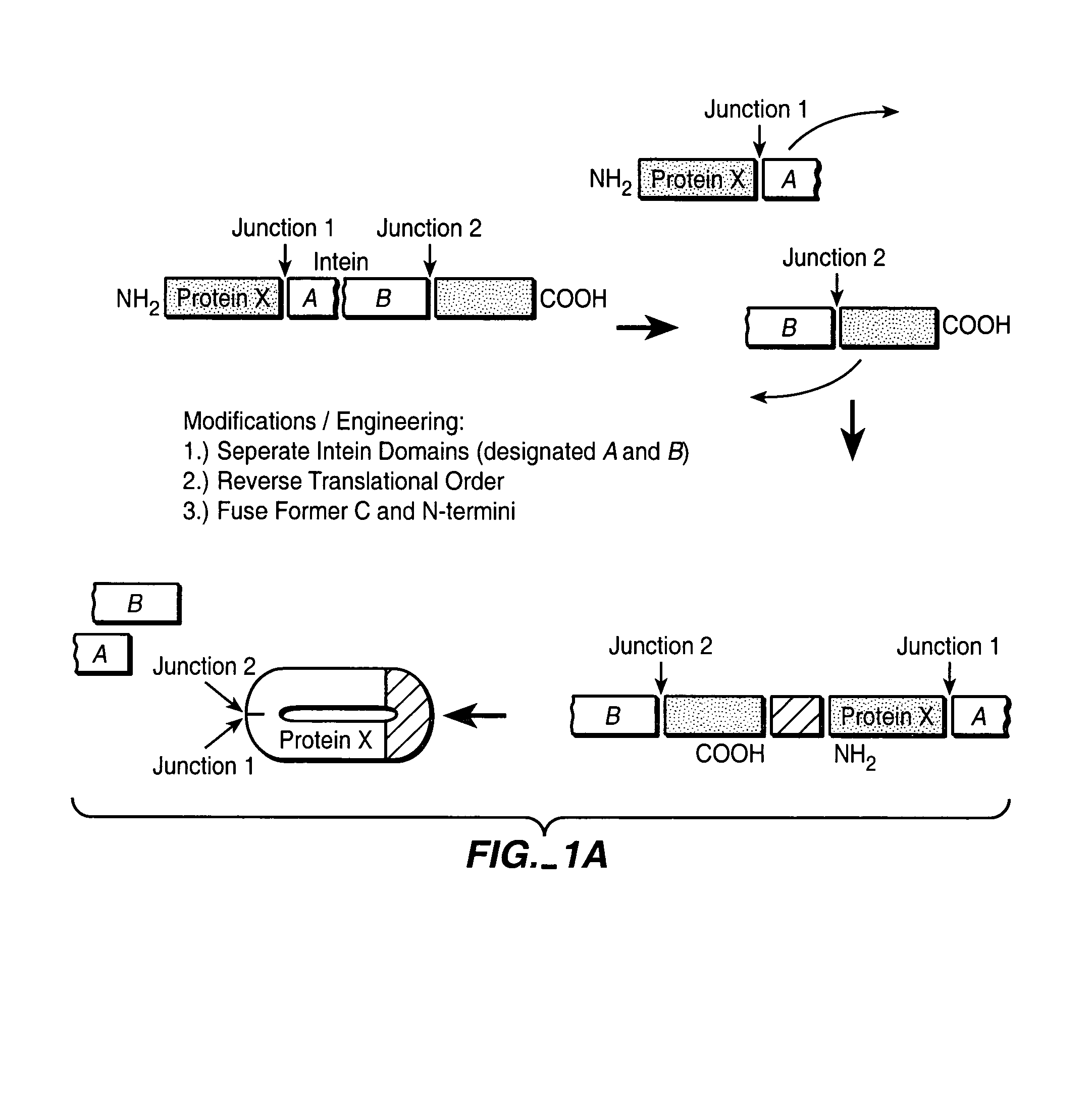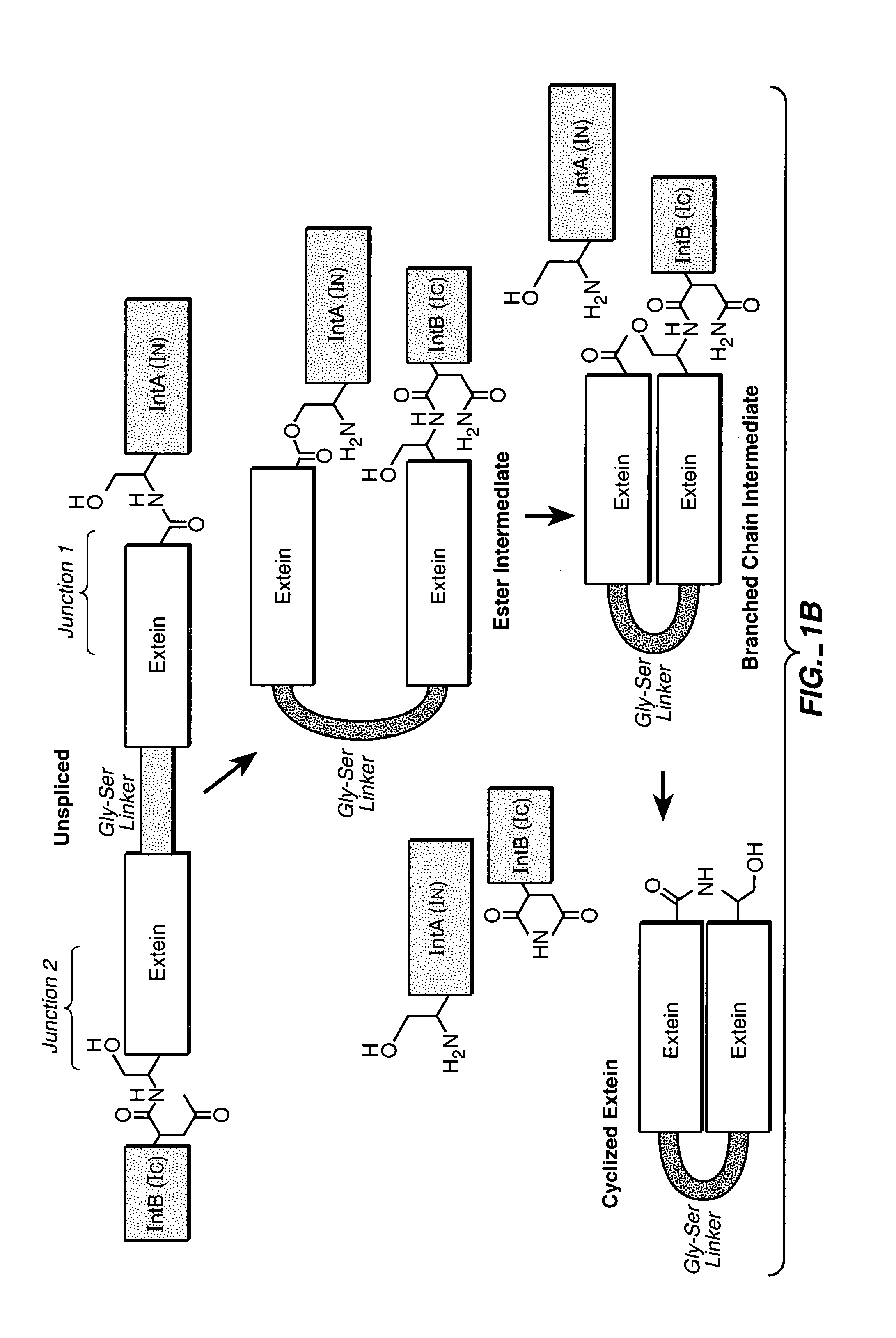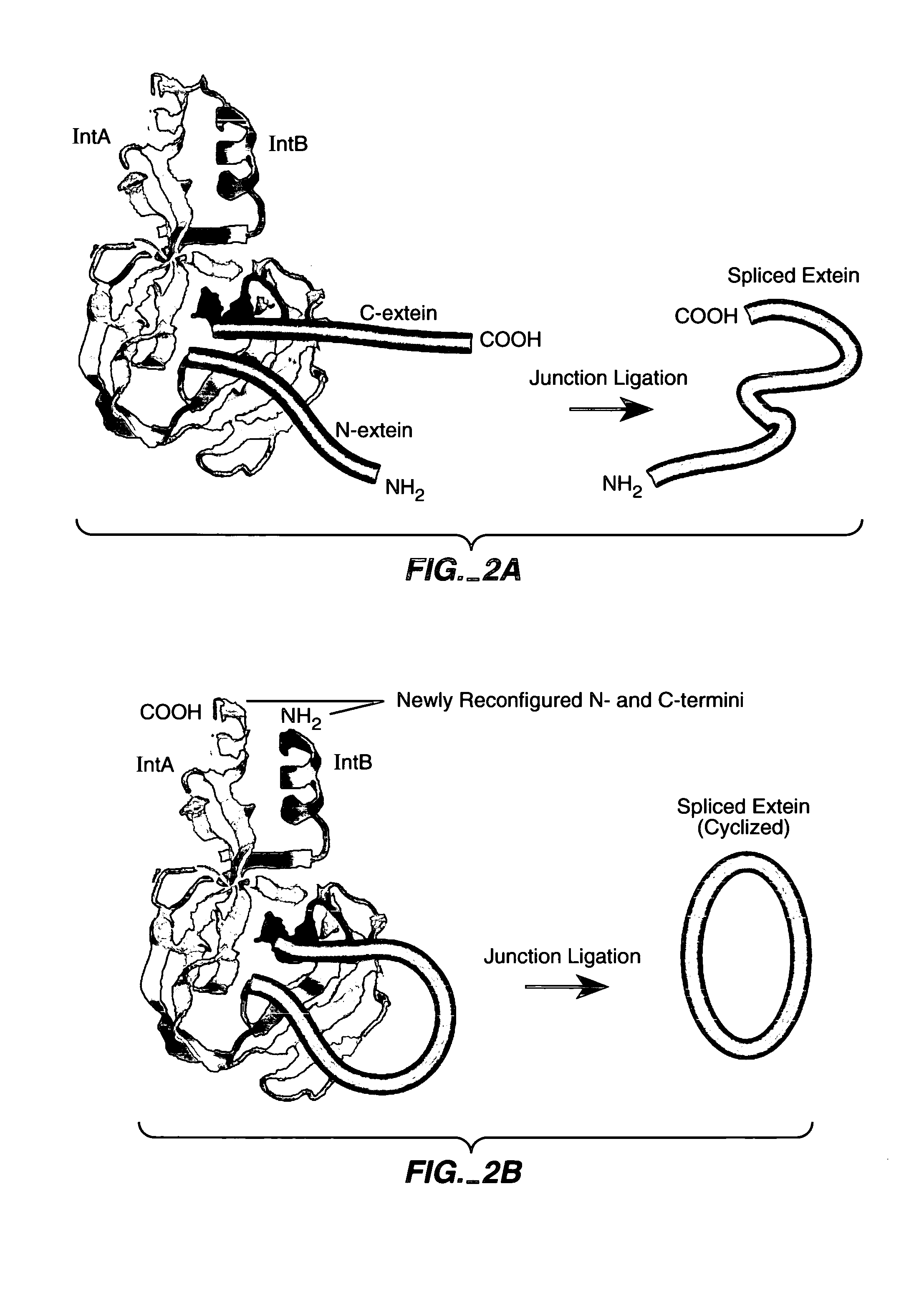In vivo production of cyclic peptides for inhibiting protein—protein interaction
a technology of cyclic peptides and protein interactions, which is applied in the field of in vivo production of cyclic peptides, methods and compositions for inhibiting proteinprotein interaction, and can solve the problems that the chemical/enzymatic cyclization of synthesized peptide precursors is limited to the system, and achieves the effect of reducing the number of cyclization reactions
- Summary
- Abstract
- Description
- Claims
- Application Information
AI Technical Summary
Benefits of technology
Problems solved by technology
Method used
Image
Examples
example 1
Isolation of Inteins with Altered Cyclization Activity
[0368]A fluorescent reporter system was designed for quantifying intein cyclization. GFP was split at the loop 3 junction and the translational order of the N and C-terminal fragments were reversed (FIG. 12A). The termini were held together by a glycine-serine linker. In some constructs, one-half of the myc epitope was fused onto either side of the loop 3 junction (FIG. 12A). The resulting GFP molecules were positioned with an intein scaffold comprising either wild-type or a mutant intein (FIG. 12C).
[0369]Mutant intein sequences obtained using PCR mutagenesis were screened for activity by FACS sorting for increases in fluorescence. Western blot analysis of several other mutants is shown in FIG. 13. In FIG. 13, several of the mutants had cyclization efficiencies greater than the parental starting intein, J3.
example 2
Biasing a Cyclic Peptide to Reduce the Number of Conformers
[0370]To test the effects of a fixed proline in a cyclic 7 mer, the conformation space of the 7 mer cyclic peptide SRGDGWS (SEQ ID NO:100), containing two flexible glycines was compared with that of cyclic SRGPGWS (SEQ ID NO:102) using quenched molecular dynamics calculations (O'Connor, et al., (1992) J. Med. Chem., 35:2870-81); Mackay, et al., (1989) “The role of energy minimization in simulation strategies of biomolecular systems”, In Prediction of Protein Structure and the Principles of Protein Conformation, Fasman, G., ed., New York, Plenum Press, pp. 317-358).
[0371]The lowest 5 kcal energy conformers were collected from a total of at least 10,000 individual conformers obtained from multiple molecular dynamics trajectories, and compared with each other using the backbone amino acids by overlaying the structures and calculating the root mean square deviation of these atoms in the best fit overlay using Insightll (Molecula...
example 3
Two-Hybrid Assay to Detect Inhibition of Protein-Protein Interaction Plasmid Construction
Reporter Vector:
[0375]Full length EBNA gene coding region is amplified by polymerase chain reaction from plasmid pCEP4, purchased from Invitrogen. The EBNA fragment is then cloned into pCR2.1. Plasmid phi-EGFP is purchased from Clontech. The EBNA fragment is transferred from pCR2.1 vector into Mlu I-Nhe I gap of pBI-EGFP to construct pBI-R, the bi-directional double reporter vector. A control vector pBI-EGFP-Luc is also purchased from Clontech with pBI-EGFP. This vector is used in quantitative luciferase assay. The test and bait vectors are made in a similar manner, as will be appreciated by those in the art. In addition, a library of intein inserts are inserted into an expression vector.
Cell Culture and Transfection
[0376]Phoenix (293 origin; see PCT / US97 / 01019, hereby incorporated expressly by reference in its entirety) cells are used in all of the transient assays: however, as will be apprecia...
PUM
| Property | Measurement | Unit |
|---|---|---|
| temperature | aaaaa | aaaaa |
| energy | aaaaa | aaaaa |
| fluorescence | aaaaa | aaaaa |
Abstract
Description
Claims
Application Information
 Login to View More
Login to View More - R&D
- Intellectual Property
- Life Sciences
- Materials
- Tech Scout
- Unparalleled Data Quality
- Higher Quality Content
- 60% Fewer Hallucinations
Browse by: Latest US Patents, China's latest patents, Technical Efficacy Thesaurus, Application Domain, Technology Topic, Popular Technical Reports.
© 2025 PatSnap. All rights reserved.Legal|Privacy policy|Modern Slavery Act Transparency Statement|Sitemap|About US| Contact US: help@patsnap.com



